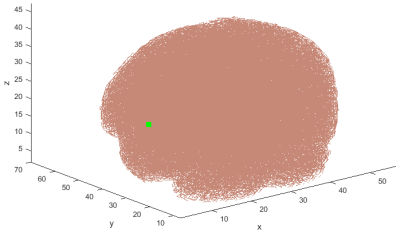Unal Sakoglu1, Lohit Ravi Teja Bhupati2, Olexandra Petrenko1, and Vince D Calhoun3
1Computer Engineering, University of Houston - Clear Lake, Houston, TX, United States, 2Computer Science, University of Houston - Clear Lake, Houston, TX, United States, 3Center for Translational Research in Neuroimaging and Data Science (TReNDS), Atlanta, GA, United States
1Computer Engineering, University of Houston - Clear Lake, Houston, TX, United States, 2Computer Science, University of Houston - Clear Lake, Houston, TX, United States, 3Center for Translational Research in Neuroimaging and Data Science (TReNDS), Atlanta, GA, United States
We develop a 3D to 1D ordering method for fMRI, using a novel space filling curve, which is adaptive to brain's shape. We apply this ordering to fMRI activation maps from a schizophrenia study, obtain features, perform classification of schizophrenia vs normal controls.


